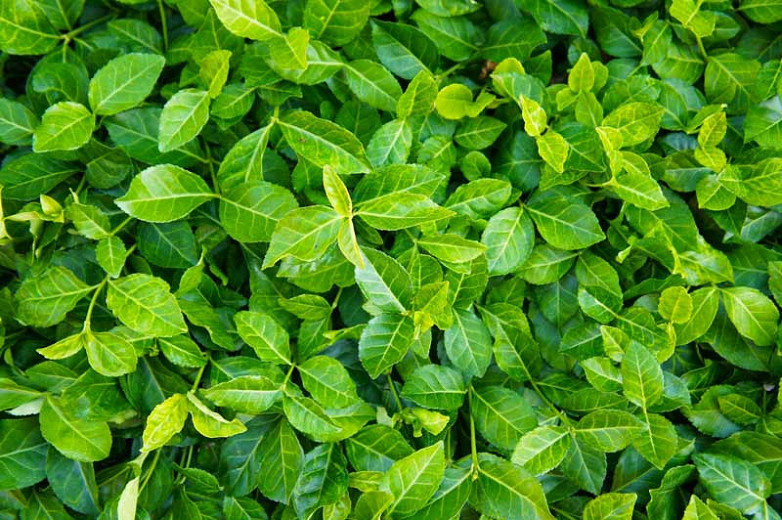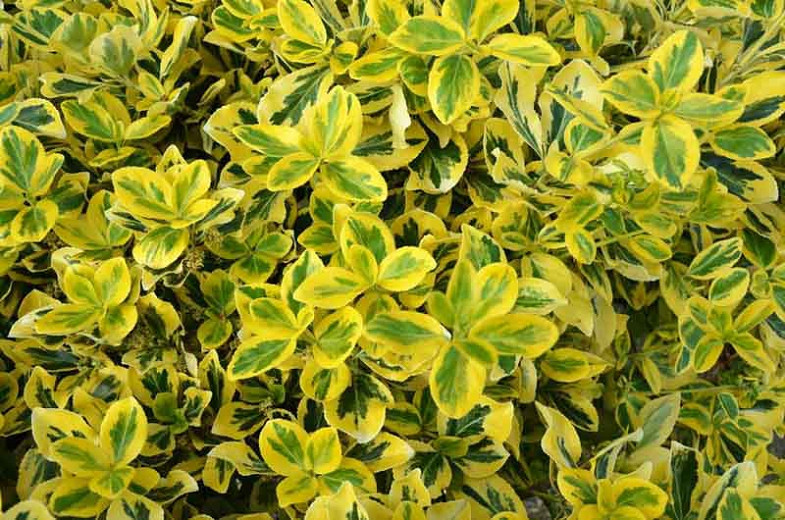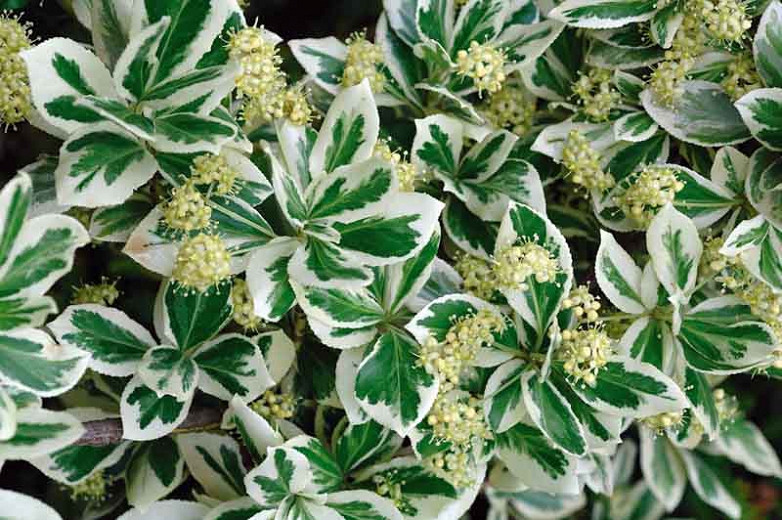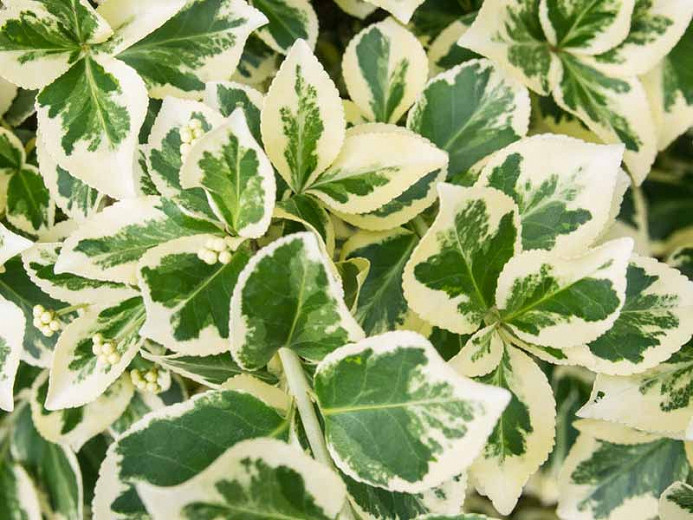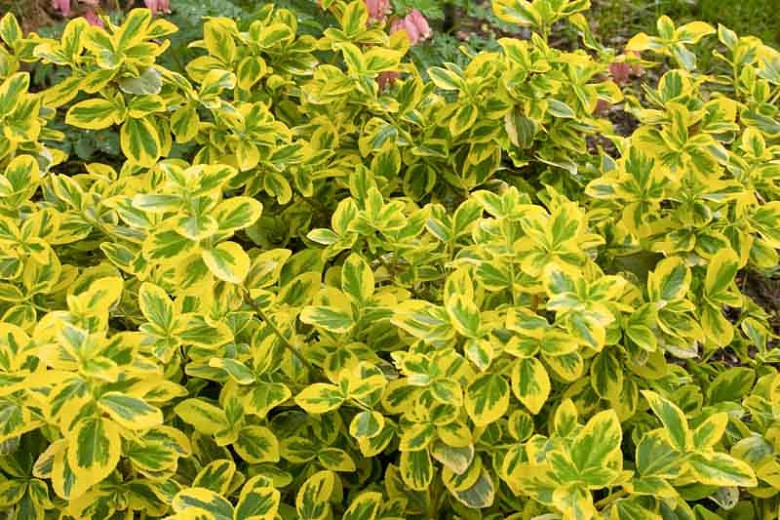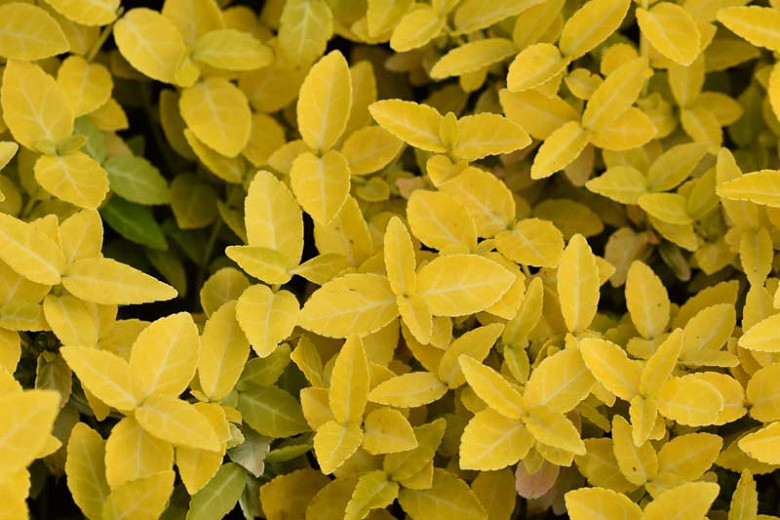Euonymus fortunei (Wintercreeper)
Euonymus fortunei (Wintercreeper) is a fast-growing, evergreen shrub, vine, or groundcover of variable size. It can grow as a woody, clinging vine climbing to 40-70 ft. (12-21 m) with the support of aerial roots, or it can form a dense groundcover or low shrub. The foliage is variable in color and size. The ovate-elliptic, finely toothed leaves, 1-3 in. long (2-7 cm), can be dark green, variegated, or with purplish lower surfaces. A few tiny, inconspicuous, greenish flowers are produced in early summer. They are followed by long-lasting, small berries that are eaten by birds. Native to Asia, Wintercreeper adds four-season color to the landscape and has long been cultivated as an ornamental plant in China and Japan. It has also been widely used as an ornamental plant in temperate and sub-tropical regions around the world. Wintercreeper spreads both by creeping stems that root where they touch the ground and by animal or water-dispersed seeds. It has been reported to be invasive in natural areas in most of eastern North America. Over 50 cultivars are currently available. They should be used with care as they are considered invasive in some locations.
- Grows up to 2-10 ft. tall and wide (60-300 cm).
- A full sun to part shade lover, this plant is easily grown in average, medium moisture, well-drained soils. Grow in full sun if your soil is moisture retentive. Tolerates a wide range of soils excluding boggy and wet soils.
- Extremely versatile, Euonymus fortunei may be used as a trailing ground cover, a low hedge, massed on slopes to control erosion, or as a foundation plant. With support, it will climb vigorously and is ideally trained against a shady wall.
- Watch for Euonymus scale, anthracnose, crown gall, leaf spot, mildew, and aphids.
- All parts may cause severe discomfort if ingested.
- Euonymus fortunei species is native to China, Japan, and Korea.
- Find where Euonymus fortunei species is invasive in the United States.
- Discover beautiful U.S. native plant alternatives.
Requirements
| Hardiness | 5 – 9 |
|---|---|
| Heat Zones | 2 – 9 |
| Climate Zones | 2, 2B, 3, 3A, 3B, 4, 5, 6, 7, 8, 9, 10, 11, 13, 14, 15, 16, 17 |
| Plant Type | Shrubs |
| Plant Family | Euonymus |
| Exposure | Full Sun, Partial Sun |
| Season of Interest | Spring (Early,Mid,Late)Summer (Early,Mid,Late)FallWinter |
| Height | 2' – 10' (60cm – 3m) |
| Spread | 2' – 10' (60cm – 3m) |
| Water Needs | Average |
| Maintenance | Low |
| Soil Type | Chalk, Clay, Loam, Sand |
| Soil pH | Acid, Alkaline, Neutral |
| Soil Drainage | Moist but Well-Drained, Well-Drained |
| Characteristics | Showy, Evergreen |
| Garden Uses | Banks and Slopes, Beds and Borders, Ground Covers, Hedges and Screens, Patio and Containers |
| Garden Styles | City and Courtyard, Informal and Cottage, Prairie and Meadow |

